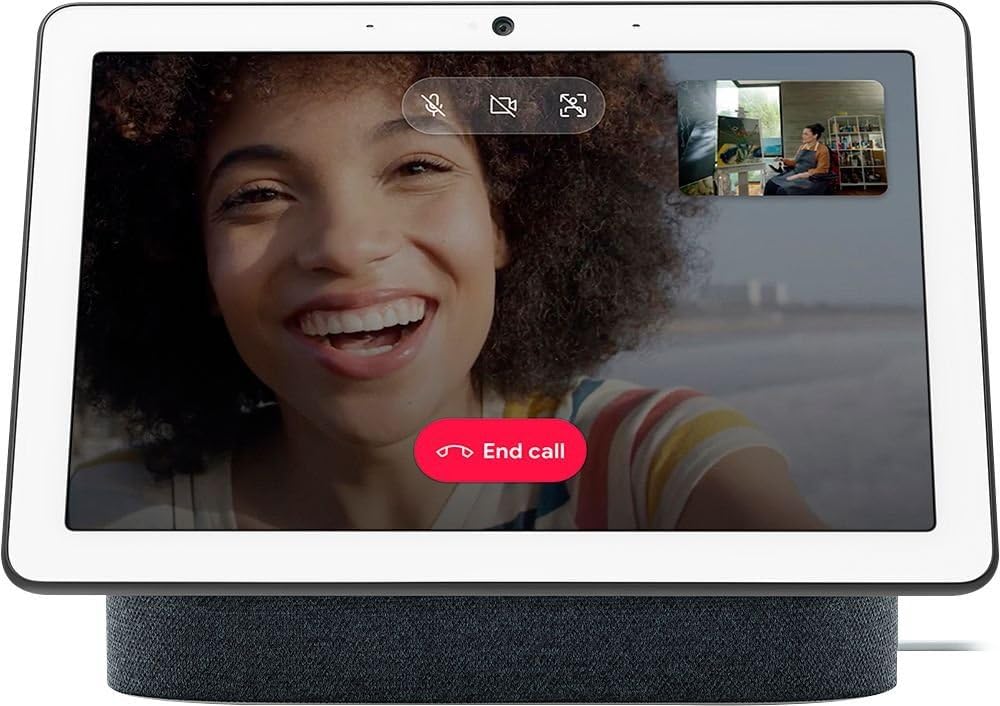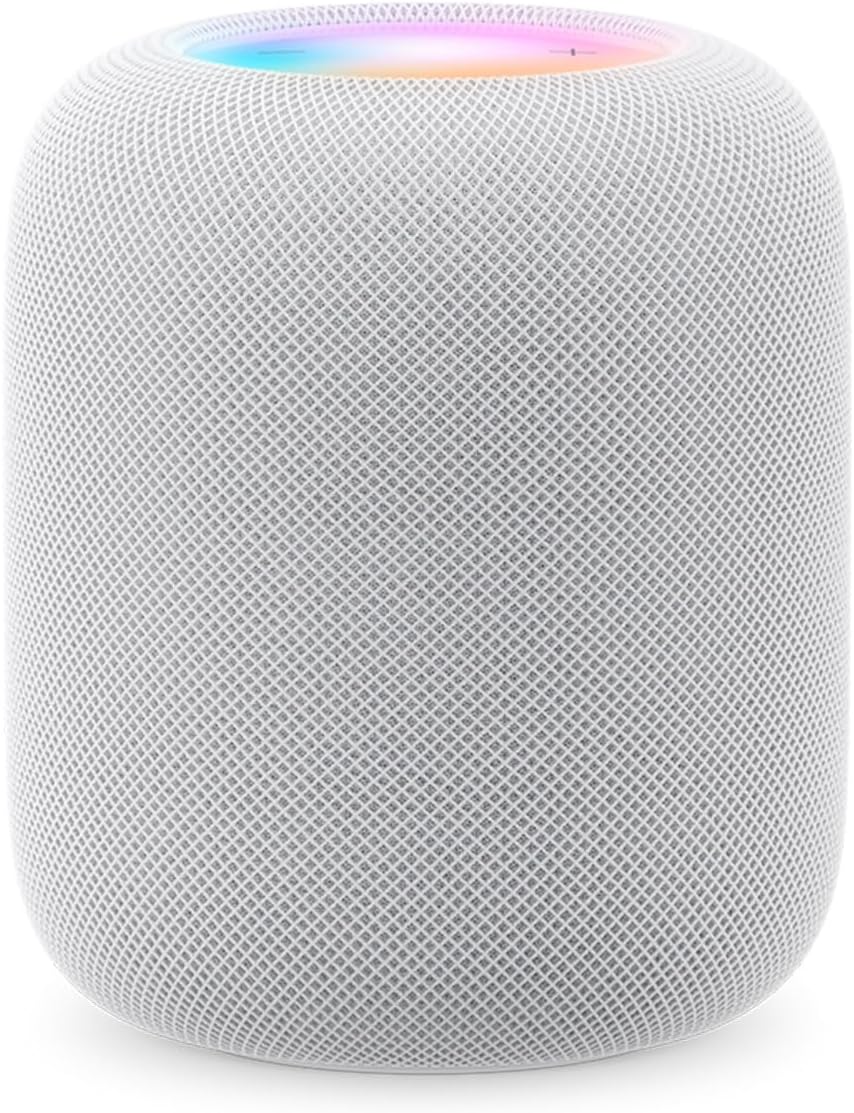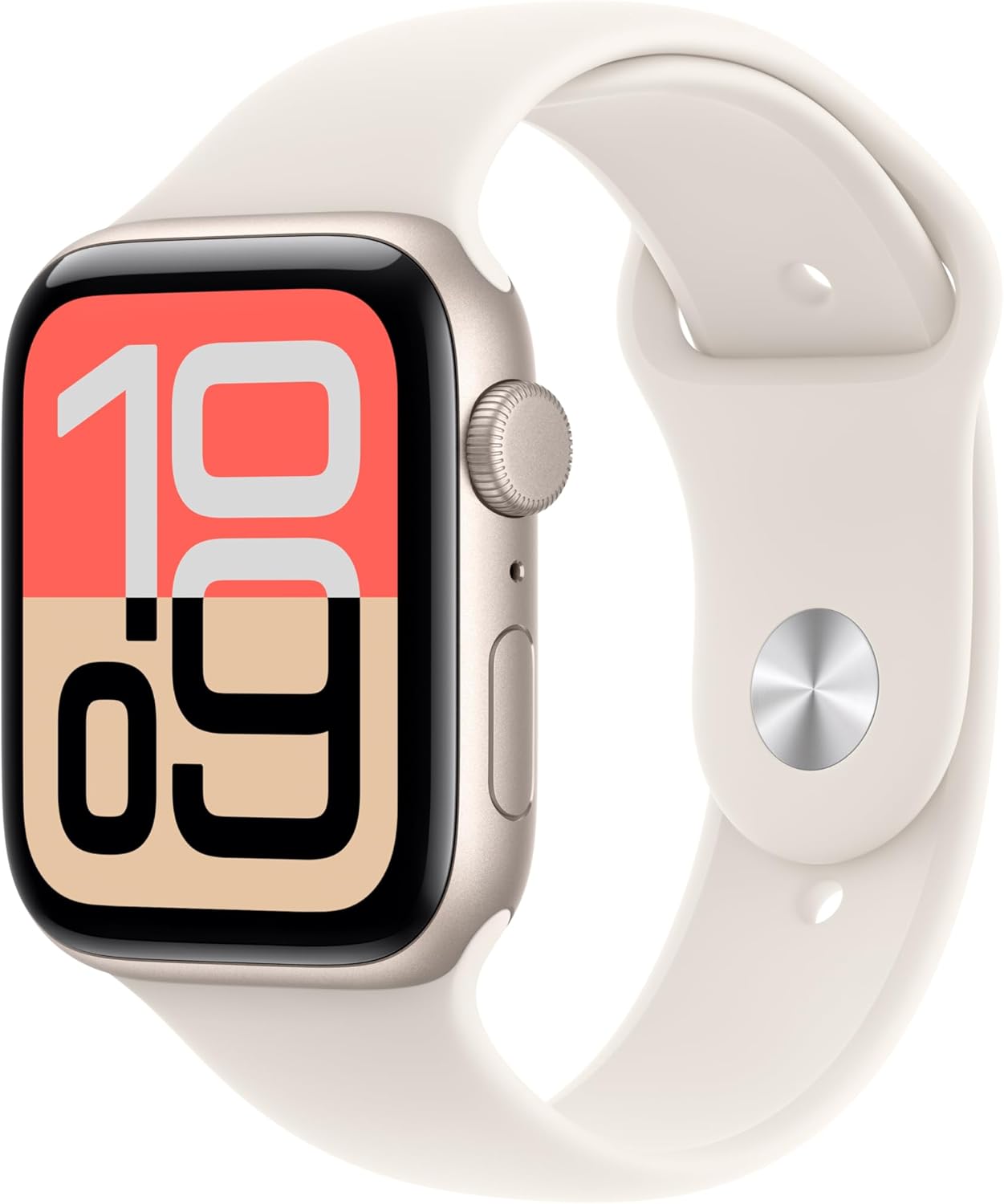Smart Home Devices for Seniors: Enhancing Comfort and Safety
Nearly 58 million Americans over 65 live independently, and more than three-quarters of people over 50 plan to remain in their homes as they age. Smart home devices can significantly enhance safety, comfort, and independence for seniors aging in place while providing peace of mind for their caregivers.
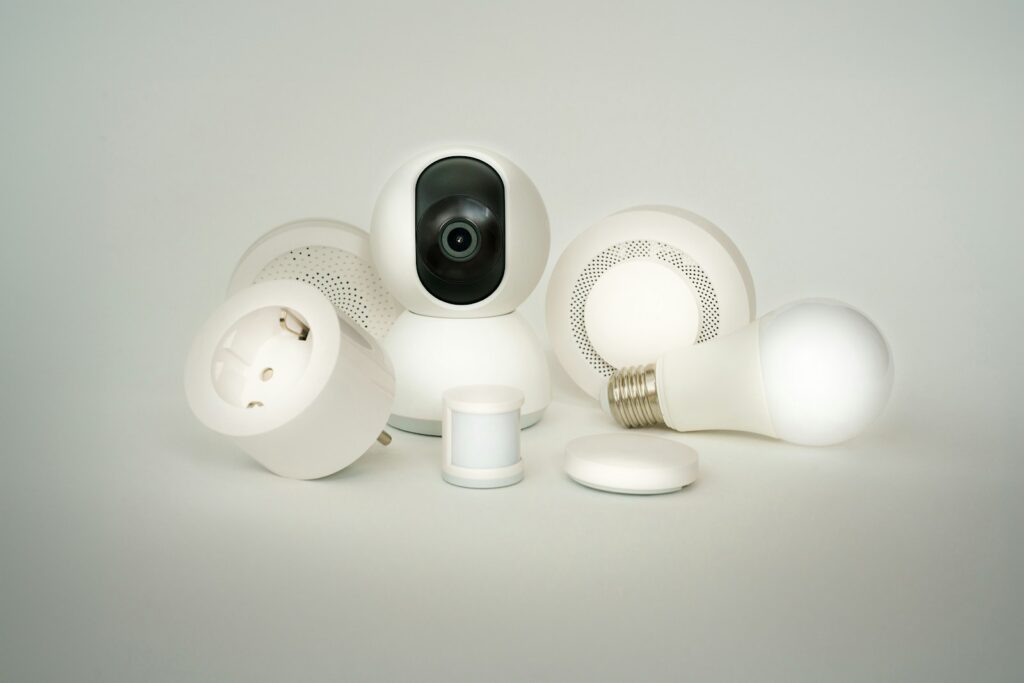
Smart home technology for seniors includes emergency contact systems, security cameras, automated lighting, and voice-controlled assistants that work together to create a safer living environment. These devices can detect falls, monitor daily activities, and provide instant access to help when needed.
The right smart home setup depends on individual needs, technical comfort levels, and specific safety concerns. Understanding which devices offer the most benefit, how to set them up properly, and what features matter most can help seniors and their families make informed decisions about creating a safer, more connected home environment.
Key Smart Home Devices for Seniors
Modern smart home technology offers seniors practical solutions for maintaining independence and safety. Voice-controlled assistants simplify daily tasks, while comprehensive security systems provide peace of mind for both seniors and caregivers monitoring remotely.
Smart Speakers and Voice Assistants
Amazon Alexa devices lead the market for senior-friendly voice control. The Amazon Echo Dot works well with Alexa Emergency Assist, a paid service that connects users to live responders who can request emergency services.
Google Home and Google Assistant offer similar voice command capabilities. These devices control other smart home technology through simple spoken instructions.
Apple HomePod integrates with Siri for iPhone users. All smart speakers can make calls, set medication reminders, and control compatible devices throughout the home.
Voice commands eliminate the need to navigate smartphone apps. Seniors can simply say “Alexa, turn on the lights” or “Hey Google, call my daughter” without touching any buttons.
Key features for seniors:
- Hands-free operation
- Emergency calling capabilities
- Medication reminders
- Weather and news updates
- Smart home device control
Security and Safety Systems
Smart security systems provide comprehensive home protection. Ring Alarm systems support multiple add-ons including door sensors, smoke detectors, and cameras with professional monitoring available.
Security cameras allow caregivers to check on seniors remotely. Many include two-way audio for direct communication between family members and aging parents.
Smart locks offer keyless entry through codes or smartphone apps. This eliminates concerns about lost keys while allowing caregivers emergency access when needed.
Motion sensors detect movement throughout the home. They automatically trigger lights in hallways and bathrooms, reducing fall risks during nighttime navigation.
Smart smoke detectors send alerts directly to smartphones. Leak detectors prevent water damage by notifying homeowners of plumbing issues immediately.
Medical alert systems with fall detection automatically contact emergency services. Many integrate with existing smart home assistants for seamless operation.
Automated Lighting and Home Climate Controls
Smart lighting systems automatically illuminate pathways and rooms. Motion detection turns lights on when seniors enter spaces, preventing dangerous navigation in darkness.
Smart bulbs adjust brightness throughout the day. They can gradually dim in the evening or brighten in the morning to support natural sleep cycles.
Smart thermostats maintain comfortable temperatures automatically. Caregivers can monitor and adjust settings remotely, ensuring seniors stay comfortable while managing energy costs.
Smart blinds open and close on schedules. This helps regulate natural light and temperature without requiring physical effort to reach window controls.
Smart plugs control lamps, fans, and small appliances through voice commands. They can also run on timers to ensure devices turn on and off at appropriate times.
Automated features include:
- Motion-activated lighting
- Temperature scheduling
- Remote climate control
- Automatic blind adjustment
- Timed appliance operation
Health, Wellness, and Monitoring Devices
Smart medication dispensers organize pills and provide dosing reminders. They alert caregivers when doses are missed and can automatically reorder prescriptions.
Fall detection devices monitor for sudden movements or impacts. Apple Watch SE includes built-in fall and crash detection while sharing medical information with emergency responders.
Robot vacuum cleaners maintain clean floors automatically. They reduce the physical demands of housekeeping while preventing trip hazards from debris.
Health monitoring wearables track heart rate, sleep patterns, and activity levels. This data helps seniors and healthcare providers identify potential health concerns early.
Emergency assist services connect through smart speakers. They provide 24/7 access to live operators who can coordinate emergency response or contact family members.
Monitoring capabilities for dementia and Alzheimer’s care:
- Door and window sensors
- GPS tracking devices
- Medication compliance monitoring
- Sleep pattern analysis
- Daily activity tracking
Smart home devices for seniors focus on practical safety and convenience rather than complex automation.
Choosing, Setting Up, and Maintaining Smart Home Devices
Successful smart home implementation for seniors requires careful device selection based on individual needs, prioritizing simple setup processes, and ensuring robust security measures. The right approach balances functionality with ease of use while addressing privacy concerns and ongoing maintenance requirements.
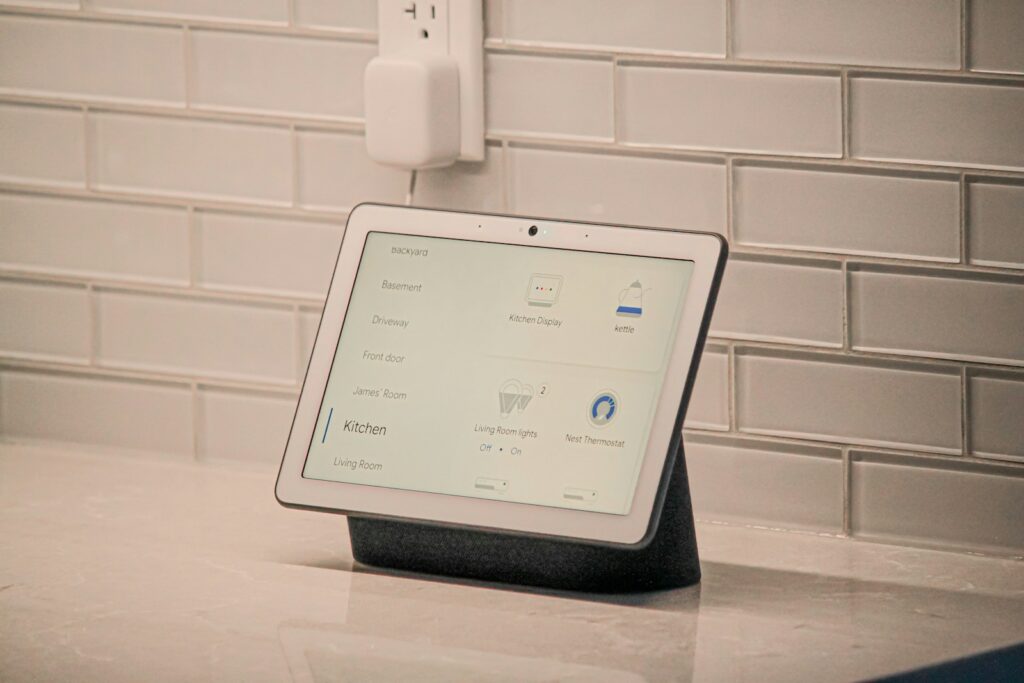
Assessing Needs and Selecting the Right Devices
Individual needs vary significantly among seniors, making personalized device selection crucial. Caregivers should evaluate mobility limitations, vision challenges, and daily routine patterns before purchasing equipment.
Safety-focused devices should take priority. Emergency contact systems like the Apple Watch SE provide fall detection and emergency calling without the stigma of traditional medical alert devices. Smart security systems can monitor doors, windows, and detect visitors through integrated cameras.
Daily convenience features enhance independence. Smart lighting eliminates fumbling for switches in dark hallways. Voice-controlled assistants handle phone calls, medication reminders, and weather updates without requiring smartphone skills.
Budget considerations matter significantly. Starting with essential safety devices allows gradual system expansion. Ring Alarm systems provide comprehensive monitoring for $20 monthly, while individual smart plugs cost under $15 each.
Physical limitations guide device choices. Arthritis sufferers benefit from voice activation over manual controls. Vision-impaired users need devices with audio feedback rather than visual displays.
Ease of Setup and User-Friendliness
Simple operation remains the most critical factor for senior-focused smart home devices. Products requiring complex installation or frequent troubleshooting create frustration and abandonment.
Installation requirements vary dramatically between devices. Smart plugs require only insertion into existing outlets, while security cameras may need mounting and Wi-Fi configuration. Caregivers should plan for hands-on assistance during initial setup phases.
App complexity determines long-term success. Single-app systems like Ring manage multiple devices through one interface. Multi-app setups create confusion when seniors need to remember which app controls specific functions.
Voice commands offer the most intuitive control method. Amazon Echo devices respond to natural speech patterns without requiring button presses or screen navigation. Emergency situations become manageable through simple “Alexa, call for help” commands.
Manual backup controls provide essential redundancy. Smart light switches should function normally when pressed, even during Wi-Fi outages. This dual functionality maintains independence regardless of technical issues.
Privacy, Security, and Technical Support
Privacy concerns often deter seniors from adopting smart home technology, yet proper security measures can address most legitimate worries while preserving the safety benefits these devices provide.
Data protection starts with choosing reputable manufacturers. Established companies like Apple, Amazon, and Google follow industry-standard encryption practices. Avoiding unknown brands reduces security vulnerabilities significantly.
Network security requires basic Wi-Fi protection. Strong passwords and regular router updates prevent unauthorized access. Caregivers should handle these technical maintenance tasks remotely when possible.
Technical support availability influences long-term satisfaction. Major brands offer phone support during business hours, while smaller companies may provide only email assistance. This difference becomes critical during emergencies or device malfunctions.
Professional monitoring services add human oversight to automated systems. Alexa Emergency Assist connects users with live operators who can dispatch emergency services and contact family members when devices detect problems.
Regular software updates maintain security and functionality. Automatic update settings prevent seniors from managing this technical requirement while ensuring devices receive necessary patches and improvements.
Frequently Asked Questions
Smart home devices address common concerns about aging in place safely and maintaining independence. These technologies range from voice assistants that control multiple systems to specialized monitoring equipment that detects emergencies.
What are the top-rated smart home devices designed to assist seniors living independently?
Voice assistants like Amazon Alexa and Google Assistant serve as central hubs for controlling multiple devices through simple voice commands. These systems help seniors manage lighting, temperature, and communication without physical interaction.
Smart lighting systems with motion sensors automatically illuminate pathways during nighttime bathroom trips. The Philips Hue Motion Sensor Lights integrate motion detection for automatic activation.
Video doorbells such as Ring Video Doorbell and Eufy Video Doorbell allow seniors to screen visitors remotely. These devices provide two-way audio communication and smartphone notifications.
Smartwatches with fall detection capabilities automatically contact emergency services when hard falls occur. Apple Watch and Lively Mobile Plus models offer this critical safety feature.
How can smart home technology enhance safety for seniors with mobility issues?
Automated lighting prevents falls by eliminating the need to search for light switches in darkness. Smart lighting systems can activate through voice commands or motion detection.
Smart locks provide keyless entry through keypad codes or fingerprint recognition. These systems eliminate fumbling with keys and allow remote access for caregivers during emergencies.
Voice-controlled thermostats enable temperature adjustments without walking to wall units. Seniors can maintain comfortable environments through simple verbal commands to smart assistants.
Smart plugs convert regular appliances into voice-controlled devices. Seniors can operate lamps, fans, and coffee makers remotely without reaching switches or outlets.
Which assistive devices are recommended for elderly individuals with dementia?
Voice assistants can provide medication reminders through programmed announcements at specific times. These systems help maintain consistent medication schedules without caregiver presence.
Smart displays show large, clear information and enable video calls with family members. Visual cues and familiar faces help maintain social connections and reduce confusion.
Automated medication dispensers like Hero Medication Dispenser release pills at scheduled times. These devices alert caregivers when doses are missed or skipped.
GPS-enabled smartwatches track location and provide emergency calling features. These devices help locate individuals who may wander and ensure quick response during crises.
What are the most user-friendly smart home systems for seniors unfamiliar with technology?
Amazon Echo devices offer straightforward voice commands for controlling connected systems. The Echo Show displays add visual elements that make interactions clearer.
Smart plugs require minimal setup and provide immediate voice control for existing appliances. These devices offer the simplest entry point into smart home automation.
Nest thermostats feature large, high-contrast displays with bright backlights. The interfaces remain readable for seniors with visual impairments.
One-touch personal emergency response systems connect users directly to monitoring centers. Medical Guardian devices provide dedicated emergency access without smartphone complexity.
How do video monitoring systems provide added security for the elderly at home?
Indoor security cameras like the Eufy Indoor Cam S350 enable remote monitoring by family members. These systems include two-way audio for direct communication.
Video doorbells allow seniors to identify visitors without approaching the door. Motion detection alerts notify users of activity around the property perimeter.
Outdoor cameras with solar power, such as the Eufy SoloCam S340, provide continuous monitoring without electrical connections. These systems offer 3K resolution for clear image capture.
Smart displays can show live camera feeds throughout the home. The Eufy Smart Display E10 serves as a portable viewing station for security cameras.
What kinds of smart home gadgets can help seniors with daily tasks and improve their quality of life?
Robot vacuums like the Eufy Robot Vacuum Omni Series automate floor cleaning with minimal user intervention. These devices include both vacuuming and mopping capabilities.
Smart smoke detectors provide specific location announcements during emergencies. Nest Protect devices announce “Emergency! Smoke in the kitchen” instead of generic alarms.
Voice assistants can make phone calls, play music, and provide weather updates through simple commands. These features maintain social connections and daily routines.
Smart thermostats learn temperature preferences and adjust automatically based on occupancy. Geofencing technology optimizes energy usage when homes are empty.


